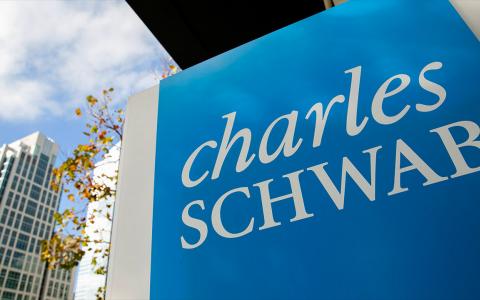
(MarketWatch) Just days after eliminating commissions on, well, just about everything, Charles Schwab made the first additions to its lineup of exchange traded funds with the debuts of three fixed income products.
Keeping with Schwab's tradition of offering low costs on ETFs, each of the new funds does just that with annual fees of just 0.06% per year, or $6 on a $10,000 investment.
Let's look at the newest Schwab fixed income ETFs here. The new additions almost double Schwab's lineup of bond ETFs to seven from four.
The Schwab 1-5 Year Corporate Bond ETF SCHJ, -0.17% targets the Bloomberg Barclays US 1-5 Year Corporate Bond Index and only features corporate bonds with $300 million or more of outstanding face value.
Though interest rates have been falling, enticing investors to embrace longer duration fare, short-term corporate bond funds in the investment-grade category, where SCHJ, remain popular with risk-averse income investors.
Established rivals to SCHJ yield in the area of 3% and have been solid though not spectacular performers this year.
See Also: Best Online Stock Trading Brokers
For investors willing to take on more interest rate risk, the Schwab 5-10 Year Corporate Bond ETF SCHI, +0.17% should deliver a high income level than its stablemate SCHJ.
SCHI tracks the Bloomberg Barclays US 5-10 Year Corporate Bond Index and is considered an intermediate-term bond fund. Investment-grade corporate bonds in this category often yield in the 3.50% neighborhood.
“These three new ETFs are designed to address the needs that our clients tell us are most important to them,” Schwab also notes. “We are pleased to offer these new low cost ETFs now, as investors are increasingly looking to bond ETFs as a potential source of diversification, liquidity and income.
The Schwab Long-Term U.S. Treasury ETF SCHQ, -1.13% follows the Bloomberg Barclays US Long Treasury Index and of the three ETFs highlighted here, may be the one destined for the best near-term performance if the Federal Reserve lowers interest rates once or twice before the end of this year.
“Long government funds concentrate on bonds backed by the U.S. government or by government-linked agencies,” according to Schwab. “Because these funds have durations of more than six years, they are more sensitive to interest rates, and thus riskier, than funds that have shorter durations.”



